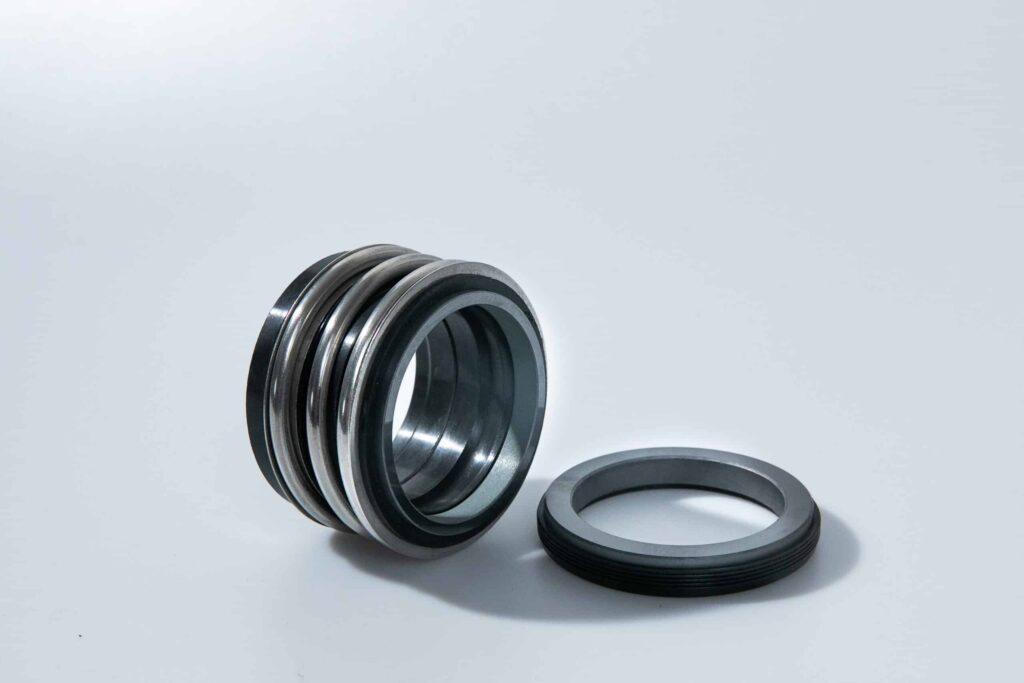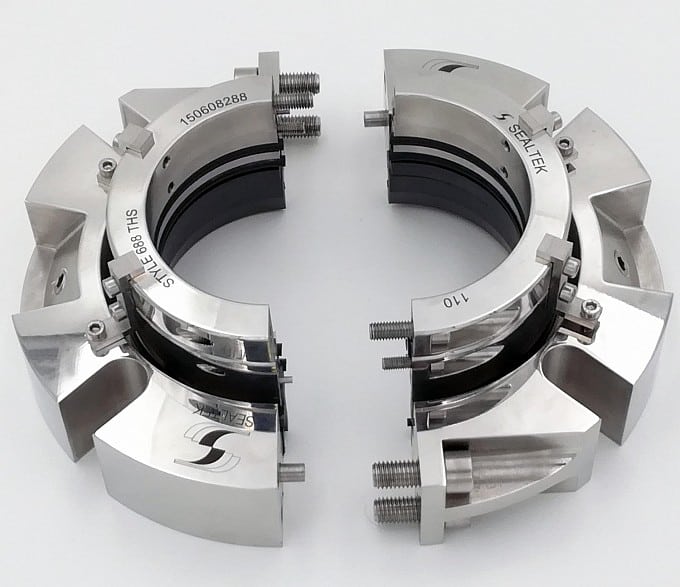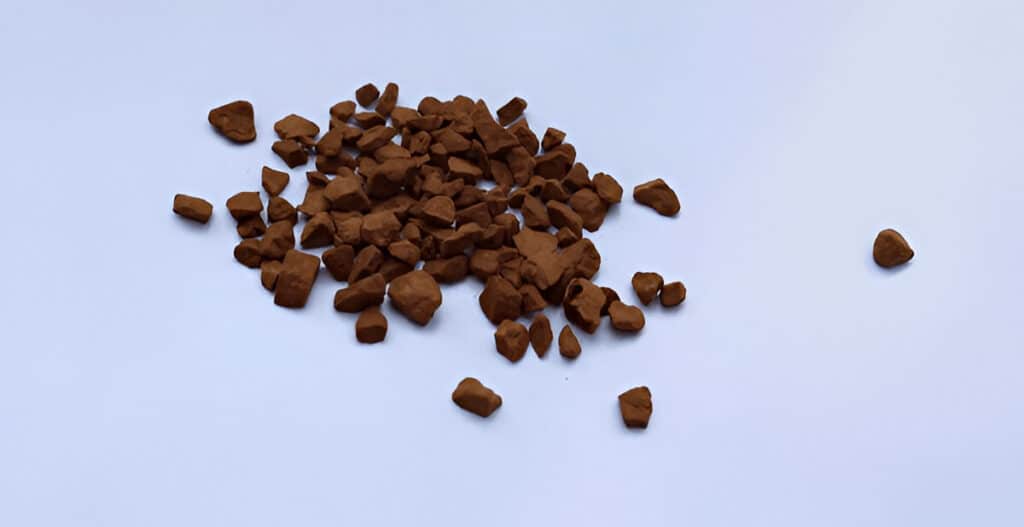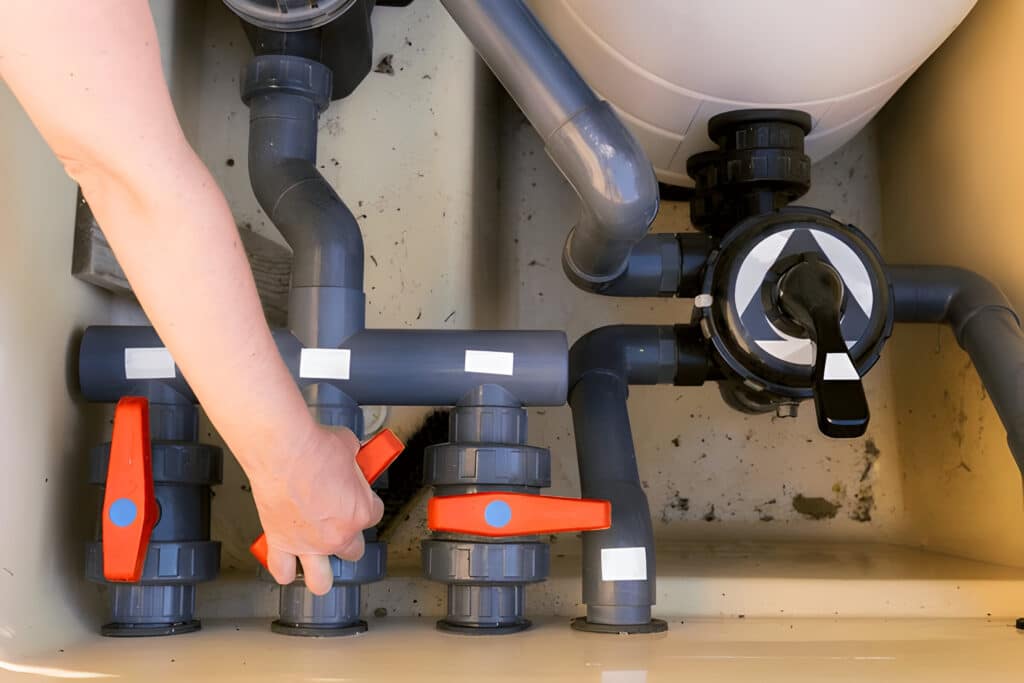What are Component Mechanical Seals
Component mechanical seals, also known as traditional seals or non-cartridge seals, consist of individual seal components that are assembled and installed separately into the pump housing.
These seal types typically include a stationary seat, rotating seal face, secondary sealing elements like O-rings or wedge seals, and a gland plate that holds the components in place. The arrangement of seal components allows for effective sealing between the stationary and rotating parts of the pump, preventing fluid leakage along the rotating shaft.

Advantages of component seals
- Lower upfront cost: Component seals are generally less expensive than cartridge seals.
- Widely available for different pump models: Component seals are readily available for a broad range of pump designs and sizes, ensuring compatibility with most industrial pumps.
- Individual parts can be replaced: If a specific component fails, it can be replaced individually without the need to replace the entire seal assembly, potentially reducing maintenance costs.
Disadvantages of component seals
- Precise installation required: Installing component seals requires careful measurement and precise alignment of each component. This process demands the expertise of experienced technicians to ensure proper installation and optimal seal performance.
- Installation errors can cause failures: Incorrect installation, such as misalignment or improper torque, can lead to premature seal failure, increased leakage, and reduced seal life.
- Exposed parts vulnerable: The individual components of a component seal are exposed to the environment and can be susceptible to damage during handling, storage, and installation.
What are Cartridge Mechanical Seals
Cartridge mechanical seals are self-contained units that combine all the necessary sealing components into a single, pre-assembled package. The seal assembly, including the rotating seal face, stationary seat, secondary seals, and spring elements, is housed within a gland plate or sleeve. This design allows for easy installation without the need for measuring or setting individual seal components.
Cartridge seals are available in single and double seal configurations, offering flexibility for various application requirements.

Advantages of cartridge seals
- Easy installation: Cartridge seals come pre-assembled, requiring no measuring or assembly during installation. This simplifies the installation process and reduces the time required for seal replacement.
- Factory pre-set: The seal components in a cartridge unit are pre-set at the factory, ensuring proper alignment and compression. This eliminates the potential for installation errors that can lead to premature seal failure.
- Enclosed design: Cartridge seals feature an enclosed design that protects the critical sealing components from damage during handling, storage, and installation.
- Complex seal arrangements: Cartridge seals can accommodate more advanced sealing configurations, such as dual seals or tandem seals, which provide additional protection against leakage and improve seal reliability in challenging applications.
- Eliminated axial misplacement: The cartridge design ensures that the sealing components are maintained in the correct axial position, preventing misalignment during installation and operation.
- Easy repairability: If a cartridge seal fails, the entire unit can be easily removed and replaced with a new cartridge, reducing downtime and simplifying maintenance procedures.
Disadvantages of cartridge seals
- Higher initial cost: Cartridge seals typically have a higher upfront cost compared to component seals due to their pre-assembled design and advanced features.
- May not fit certain pump designs or small shafts: Some pump designs or applications with small shaft diameters may not be compatible with cartridge seals, limiting their universal applicability.
Choosing between Component and Cartridge Seals
When selecting between component and cartridge mechanical seals, several key factors should be considered to ensure optimal seal performance and reliability.
Cost
The initial cost of the seal is often a primary consideration for many buyers.
Component seals generally have a lower upfront cost, making them an attractive choice for budget-conscious projects. However, it is essential to consider the total cost of ownership, including installation costs, maintenance requirements, and the potential for seal failure.
Cartridge seals may have a higher initial cost but can offer long-term savings through simplified installation, reduced maintenance, and improved reliability.
Ease of installation
Component seals require precise measurement and alignment of individual components, which can be time-consuming and prone to errors. This complexity necessitates the expertise of skilled technicians to ensure accurate installation.
In contrast, cartridge seals come pre-assembled and factory-set, eliminating the need for complex installation procedures. This ease of installation reduces the potential for human error and ensures consistent, reliable performance.
Parts availability
Component seals have been in use for a longer time and are widely available for various pump models and sizes. This widespread availability makes it easier to source replacement components when needed, which can be advantageous for maintenance and repair purposes.
On the other hand, cartridge seals are designed for specific pump models and may have limited interchangeability between different manufacturers. This can make sourcing replacement cartridge units or individual components more challenging, particularly for older or less common pump designs.






